Banco de Japón mantiene política monetaria estable, visión de modesto crecimiento económico
TOKIO (Reuters) - El Banco de Japón mantuvo estable la política monetaria el miércoles y reiteró su opinión de que la economía continuará expandiéndose modestamente, a pesar de que las fricciones crecientes en el comercio mundial amenazan con frenar su crecimiento.
Imagen de archivo. Una bandera japonesa revolotea sobre el edificio del Banco de Japón en Tokio, Japón, el 21 de septiembre de 2016. REUTERS / Toru Hanai
El consejo de nueve miembros del banco central probablemente también evalúo las fluctuaciones del mercado de bonos tras decidir en julio que permitiría que los rendimientos se muevan de manera más flexible en torno a su objetivo de un cero por ciento.
Los inversores se centrarán en la sesión informativa que el gobernador del Banco de Japón (BoJ, por su sigla en inglés), Haruhiko Kuroda, ofrecerá tras la reunión para obtener pistas sobre el debate respecto a los movimientos del mercado.
Como se esperaba ampliamente, el BoJ mantuvo su objetivo de tasa de interés a corto plazo en menos 0,1 por ciento y el de las tasas a largo plazo en torno al cero por ciento por 7-2 votos.
También reiteró una promesa, implementada en julio, de conservar las tasas muy bajas durante un período prolongado de tiempo, en momentos en que la inflación sigue muy lejos de su objetivo de un 2 por ciento.
“La economía de Japón se está expandiendo moderadamente”, dijo el BoJ en un comunicado donde anunció la decisión de política monetaria, y agregó que la sólida demanda mundial está apuntalando las exportaciones.
Reporte adicional de Tetsushi Kajimoto y Kaori Kaneko. Editado en español por Carlos Aliaga
Miercoles 19/09/18 Inicios de casas
37 mensajes
• Página 2 de 3 • 1, 2, 3
Re: Miercoles 19/09/18 Inicios de casas
Oro sube por menor demanda de dólares, mercado pasa por alto disputa comercial
LONDRES (Reuters) - Los precios del oro repuntaban el miércoles, ya que los inversores pasaban por alto la preocupación en torno a la guerra comercial entre Estados Unidos y China y el dólar se debilitaba, lo que atraía devuelta al mercado a los inversores en el metal precioso.
* El oro al contado marcaba un ascenso de 0,5 por ciento a 1.202,69 dólares la onza a las 1000 GMT, luego de haber cerrado con pérdidas la sesión anterior.
* Los futuros del oro en Estados Unidos subían 0,4 por ciento a 1.207,60 dólares la onza.
* “De alguna manera los mercados de materias primas han aprendido a ignorar la guerra comercial, pero habrá más ruido a partir de este asunto, así que sigue siendo un factor de incertidumbre”, dijo Nobert Ruecker, jefe de materias primas de Juluis Baer en Zúrich.
* China dijo el miércoles que no alentará una devaluación de su moneda, horas después de haber anunciado medidas en represalia - aunque menos severas de lo previsto - a los nuevos aranceles aplicados por Estados Unidos que produjeron una escalada de la disputa comercial.
* Los precios del oro han ganado cerca de 12 por ciento desde abril, ante el impacto de la intensa guerra comercial entre Estados Unidos y China y la senda de alzas de tasas de interés de la Reserva Federal.
* Los inversores han estado comprando dólares ante la percepción de que Estados Unidos tiene menos que perder en el conflicto arancelario. Pero cualquier señal de debilidad en el billete verde podría indicar que a los inversores les preocupa el impacto de los gravámenes en la economía estadounidense.
* El índice dólar, que mide al billete verde contra una cesta de divisas rivales, caía 0,2 por ciento.
* Entre otros metales preciosos, la plata subía 0,3 por ciento a 14,17 dólares la onza, mientras que el platino sumaba 0,5 por ciento a 813,74 dólares la onza, y el paladio avanzaba 0,4 por ciento a 1.013,10 dólares la onza.
LONDRES (Reuters) - Los precios del oro repuntaban el miércoles, ya que los inversores pasaban por alto la preocupación en torno a la guerra comercial entre Estados Unidos y China y el dólar se debilitaba, lo que atraía devuelta al mercado a los inversores en el metal precioso.
* El oro al contado marcaba un ascenso de 0,5 por ciento a 1.202,69 dólares la onza a las 1000 GMT, luego de haber cerrado con pérdidas la sesión anterior.
* Los futuros del oro en Estados Unidos subían 0,4 por ciento a 1.207,60 dólares la onza.
* “De alguna manera los mercados de materias primas han aprendido a ignorar la guerra comercial, pero habrá más ruido a partir de este asunto, así que sigue siendo un factor de incertidumbre”, dijo Nobert Ruecker, jefe de materias primas de Juluis Baer en Zúrich.
* China dijo el miércoles que no alentará una devaluación de su moneda, horas después de haber anunciado medidas en represalia - aunque menos severas de lo previsto - a los nuevos aranceles aplicados por Estados Unidos que produjeron una escalada de la disputa comercial.
* Los precios del oro han ganado cerca de 12 por ciento desde abril, ante el impacto de la intensa guerra comercial entre Estados Unidos y China y la senda de alzas de tasas de interés de la Reserva Federal.
* Los inversores han estado comprando dólares ante la percepción de que Estados Unidos tiene menos que perder en el conflicto arancelario. Pero cualquier señal de debilidad en el billete verde podría indicar que a los inversores les preocupa el impacto de los gravámenes en la economía estadounidense.
* El índice dólar, que mide al billete verde contra una cesta de divisas rivales, caía 0,2 por ciento.
* Entre otros metales preciosos, la plata subía 0,3 por ciento a 14,17 dólares la onza, mientras que el platino sumaba 0,5 por ciento a 813,74 dólares la onza, y el paladio avanzaba 0,4 por ciento a 1.013,10 dólares la onza.
- admin
- Site Admin
- Mensajes: 165589
- Registrado: Mié Abr 21, 2010 9:02 pm
Re: Miercoles 19/09/18 Inicios de casas
Crudo opera cerca de los 80 dlr, preocupación por suministro apuntalaría precios
LONDRES (Reuters) - El petróleo operaba estable el miércoles dado que las dudas de que se logre cubrir un déficit en el suministro cuando entren en efecto las sanciones de Washington contra Teherán compensaban un incremento en los inventarios en Estados Unidos.
Un gato hidráulico se ve rodeado de vapor durante la puesta de sol en el campo petrolero de PetroChina en Karamay, Región Autónoma Uigur de Xinjiang 5 de enero de 2011. REUTERS / Stringer NO USAR EN CHINA. SIN VENTAS COMERCIALES O EDITORIALES EN CHINA
* A las 1050 GMT, los futuros del Brent bajaban 2 centavos a 79,01 dólares el barril. El martes, el referencial registró un alza de 1,3 por ciento tras reportes de que Arabia Saudita, el mayor exportador mundial de crudo, se sentía cómoda con que los precios estuvieran por sobre los 80 dólares.
* Los futuros del West Texas Intermediate subían 1 centavo a 69,86 dólares el barril después del avance de 1,4 por ciento de la sesión anterior.
* “Las guerras comerciales (...) deberían impactar la demanda por crudo pero eso se está pasando por alto, lo que me dice que el mercado está mucho más sensible a lo que pase por el lado de la oferta”, afirmó Tamas Varga, estratega de PVM Oil Associates.
* “Creo que será el foco por las próximas seis semanas, hasta que entren en efecto las sanciones de Estados Unidos contra Irán”, agregó Varga.
* Reuters reportó el 5 de septiembre que Arabia Saudita quería que el crudo operase entre 70 y 80 dólares por barril para lograr un equilibrio entre la maximización de los ingresos y mantener un tope en los precios hasta las elecciones de medio término de Estados Unidos, en noviembre.
* Las sanciones de Washington contra el sector petrolero iraní entran en efecto el 4 de noviembre. Si bien muchos clientes han reducido sus compras, no está claro cuán fácilmente el resto de los productores podrá compensar el déficit en el suministro.
* Ese temor compensaba el sorpresivo incremento en los inventarios de crudo en Estados Unidos en la última semana, un alza de 1,2 millones de barriles a 397,1 millones de barriles, según datos de un grupo de la industria. Las cifras oficiales de existencias petroleras se publicarán a las 1430 GMT.
LONDRES (Reuters) - El petróleo operaba estable el miércoles dado que las dudas de que se logre cubrir un déficit en el suministro cuando entren en efecto las sanciones de Washington contra Teherán compensaban un incremento en los inventarios en Estados Unidos.
Un gato hidráulico se ve rodeado de vapor durante la puesta de sol en el campo petrolero de PetroChina en Karamay, Región Autónoma Uigur de Xinjiang 5 de enero de 2011. REUTERS / Stringer NO USAR EN CHINA. SIN VENTAS COMERCIALES O EDITORIALES EN CHINA
* A las 1050 GMT, los futuros del Brent bajaban 2 centavos a 79,01 dólares el barril. El martes, el referencial registró un alza de 1,3 por ciento tras reportes de que Arabia Saudita, el mayor exportador mundial de crudo, se sentía cómoda con que los precios estuvieran por sobre los 80 dólares.
* Los futuros del West Texas Intermediate subían 1 centavo a 69,86 dólares el barril después del avance de 1,4 por ciento de la sesión anterior.
* “Las guerras comerciales (...) deberían impactar la demanda por crudo pero eso se está pasando por alto, lo que me dice que el mercado está mucho más sensible a lo que pase por el lado de la oferta”, afirmó Tamas Varga, estratega de PVM Oil Associates.
* “Creo que será el foco por las próximas seis semanas, hasta que entren en efecto las sanciones de Estados Unidos contra Irán”, agregó Varga.
* Reuters reportó el 5 de septiembre que Arabia Saudita quería que el crudo operase entre 70 y 80 dólares por barril para lograr un equilibrio entre la maximización de los ingresos y mantener un tope en los precios hasta las elecciones de medio término de Estados Unidos, en noviembre.
* Las sanciones de Washington contra el sector petrolero iraní entran en efecto el 4 de noviembre. Si bien muchos clientes han reducido sus compras, no está claro cuán fácilmente el resto de los productores podrá compensar el déficit en el suministro.
* Ese temor compensaba el sorpresivo incremento en los inventarios de crudo en Estados Unidos en la última semana, un alza de 1,2 millones de barriles a 397,1 millones de barriles, según datos de un grupo de la industria. Las cifras oficiales de existencias petroleras se publicarán a las 1430 GMT.
- admin
- Site Admin
- Mensajes: 165589
- Registrado: Mié Abr 21, 2010 9:02 pm
Re: Miercoles 19/09/18 Inicios de casas
Corea del Norte invitará a expertos extranjeros a desmantelamiento de sitios de misiles
SEÚL (Reuters) - Corea del Norte acordó desmantelar “permanentemente” sus instalaciones clave de misiles en presencia de expertos extranjeros, y está dispuesta a cerrar su principal complejo nuclear si Estados Unidos toma medidas recíprocas, dijo el miércoles el presidente surcoreano, Moon Jae-in.
El presidente surcoreano, Moon Jae-in, estrecha la mano del líder norcoreano, Kim Jong Un, mientras se reúnen en Pyongyang, Corea del Norte, 18 de septiembre del 2018. Cuerpo de prensa de Pyongyang/Grupo a través de REUTERS
En una conferencia de prensa conjunta tras las conversaciones durante una cumbre en Pyongyang, Moon y el líder norcoreano, Kim Jong Un, dijeron que acordaron convertir a la Península Coreana en una “tierra de paz sin armas nucleares ni amenazas nucleares”.
Kim dijo que visitará Seúl en un futuro cercano, en la que sería la primera visita de un líder norcoreano a la capital surcoreana.
La cumbre entre Kim y Moon es vista como una prueba de fuego para las estancadas negociaciones entre Pyongyang y Washington sobre el programa nuclear de Corea del Norte, y para otra reunión que Kim propuso recientemente al presidente estadounidense, Donald Trump, luego de su encuentro histórico de junio en Singapur.
Moon estaba tratando de diseñar una propuesta que combinara un marco para la desnuclearización de Corea del Norte y una declaración conjunta que pusiera fin a la Guerra de Corea de 1950-53.
Kim se comprometió a trabajar hacia la “desnuclearización completa de la Península Coreana” durante su primer encuentro con Moon, y en su cumbre con Trump en junio.
Pero las discusiones sobre cómo implementar los compromisos imprecisos han fallado desde entonces: Washington exige medidas concretas para la desnuclearización por parte de Corea del Norte antes de acordar un objetivo clave de Pyongyang: declarar el fin de la guerra.
Corea del Norte no ha dado indicios de que esté dispuesta a renunciar unilateralmente a su arsenal nuclear y está buscando alivio para las sanciones internacionales.
Pyongyang ofreció detener las pruebas nucleares y de misiles, pero no permitió las inspecciones internacionales para el desmantelamiento de su único sitio nuclear conocido en mayo, lo que generó críticas de que su acción no podría ser verificada y se puede revertir fácilmente.
SEÚL (Reuters) - Corea del Norte acordó desmantelar “permanentemente” sus instalaciones clave de misiles en presencia de expertos extranjeros, y está dispuesta a cerrar su principal complejo nuclear si Estados Unidos toma medidas recíprocas, dijo el miércoles el presidente surcoreano, Moon Jae-in.
El presidente surcoreano, Moon Jae-in, estrecha la mano del líder norcoreano, Kim Jong Un, mientras se reúnen en Pyongyang, Corea del Norte, 18 de septiembre del 2018. Cuerpo de prensa de Pyongyang/Grupo a través de REUTERS
En una conferencia de prensa conjunta tras las conversaciones durante una cumbre en Pyongyang, Moon y el líder norcoreano, Kim Jong Un, dijeron que acordaron convertir a la Península Coreana en una “tierra de paz sin armas nucleares ni amenazas nucleares”.
Kim dijo que visitará Seúl en un futuro cercano, en la que sería la primera visita de un líder norcoreano a la capital surcoreana.
La cumbre entre Kim y Moon es vista como una prueba de fuego para las estancadas negociaciones entre Pyongyang y Washington sobre el programa nuclear de Corea del Norte, y para otra reunión que Kim propuso recientemente al presidente estadounidense, Donald Trump, luego de su encuentro histórico de junio en Singapur.
Moon estaba tratando de diseñar una propuesta que combinara un marco para la desnuclearización de Corea del Norte y una declaración conjunta que pusiera fin a la Guerra de Corea de 1950-53.
Kim se comprometió a trabajar hacia la “desnuclearización completa de la Península Coreana” durante su primer encuentro con Moon, y en su cumbre con Trump en junio.
Pero las discusiones sobre cómo implementar los compromisos imprecisos han fallado desde entonces: Washington exige medidas concretas para la desnuclearización por parte de Corea del Norte antes de acordar un objetivo clave de Pyongyang: declarar el fin de la guerra.
Corea del Norte no ha dado indicios de que esté dispuesta a renunciar unilateralmente a su arsenal nuclear y está buscando alivio para las sanciones internacionales.
Pyongyang ofreció detener las pruebas nucleares y de misiles, pero no permitió las inspecciones internacionales para el desmantelamiento de su único sitio nuclear conocido en mayo, lo que generó críticas de que su acción no podría ser verificada y se puede revertir fácilmente.
- admin
- Site Admin
- Mensajes: 165589
- Registrado: Mié Abr 21, 2010 9:02 pm
Re: Miercoles 19/09/18 Inicios de casas
3102.16 8.46 0.27%
Japan: Nikkei 225 23672.52 251.98 1.08%
Stoxx Europe 600 378.78 0.05 0.01%
UK: FTSE 100 7312.95 12.72 0.17%
CURRENCIES8:12 AM EDT 9/19/2018
LAST(MID) CHANGE
Euro (EUR/USD) 1.1666 -0.0004
Yen (USD/JPY) 112.26 -0.10
Pound (GBP/USD) 1.3129 -0.0018
Australia $ (AUD/USD) 0.7240 0.0022
Swiss Franc (USD/CHF) 0.9688 0.0044
WSJ Dollar Index 89.35 -0.07
GOVERNMENT BONDS8:12 AM EDT 9/19/2018
PRICE CHG YIELD
U.S. 10 Year 3/32 3.047
German 10 Year 3/32 0.475
Japan 10 Year -2/32 0.122
FUTURES8:02 AM EDT 9/19/2018
LAST CHANGE % CHG
Crude Oil 69.93 0.08 0.11%
Brent Crude 79.01 -0.02 -0.03%
Gold 1207.4 4.5 0.37%
Silver 14.225 0.040 0.28%
E-mini DJIA
Japan: Nikkei 225 23672.52 251.98 1.08%
Stoxx Europe 600 378.78 0.05 0.01%
UK: FTSE 100 7312.95 12.72 0.17%
CURRENCIES8:12 AM EDT 9/19/2018
LAST(MID) CHANGE
Euro (EUR/USD) 1.1666 -0.0004
Yen (USD/JPY) 112.26 -0.10
Pound (GBP/USD) 1.3129 -0.0018
Australia $ (AUD/USD) 0.7240 0.0022
Swiss Franc (USD/CHF) 0.9688 0.0044
WSJ Dollar Index 89.35 -0.07
GOVERNMENT BONDS8:12 AM EDT 9/19/2018
PRICE CHG YIELD
U.S. 10 Year 3/32 3.047
German 10 Year 3/32 0.475
Japan 10 Year -2/32 0.122
FUTURES8:02 AM EDT 9/19/2018
LAST CHANGE % CHG
Crude Oil 69.93 0.08 0.11%
Brent Crude 79.01 -0.02 -0.03%
Gold 1207.4 4.5 0.37%
Silver 14.225 0.040 0.28%
E-mini DJIA
- admin
- Site Admin
- Mensajes: 165589
- Registrado: Mié Abr 21, 2010 9:02 pm
Re: Miercoles 19/09/18 Inicios de casas
Global Stocks Steady as Trade Fears Ease
Europe treads water while Asia-Pacific region posts strong gains
Christopher Whittall
Updated Sept. 19, 2018 6:52 a.m. ET
Futures markets pointed to a roughly flat opening for the Dow Jones Industrial Average and the S&P 500 recently. The Stoxx Europe 600 was up 0.1%, boosted by gains in mining stocks. Most indexes in the Asia-Pacific region posted strong gains.
Concerns over an escalating U.S.-China trade conflict have weighed on markets at times this year. Investors sold stocks on Monday in anticipation of the Trump administration’s latest wave of tariffs. But U.S. equities bounced back Tuesday as investors judged the tariffs more measured than expected.
Analysts said comments from Chinese Premier Li Keqiang regarding trade and China’s ability to stabilize domestic growth added to the positive sentiment at a World Economic Forum event Wednesday.
“The conciliatory tones out of Beijing is part of their strategy, which is fundamentally to buy time... and allow the economy to adjust to a new world,” said Andrea Cicione, head of strategy at TS Lombard.
Mr. Cicione warned that market prices don’t reflect the escalation in trade tensions between the world’s two largest economies that he expects in the coming months. If that happens, he said it would act as a headwind for emerging markets in particular.
“The U.S. is more insulated than other markets,” he added.
China was among the best performing markets in the Asia-Pacific region Wednesday, with the Shanghai Composite Index adding 1.1%. Hong Kong’s Hang Seng Index gained 1.2%.
Chinese and Hong Kong markets have been among the worst hit this year. The Shanghai Composite reached its lowest level since November 2014 on Monday, while the Hang Seng Index entered bear market territory earlier this month—commonly defined as a 20% drop from a recent peak.
Elsewhere, Japan’s Nikkei Stock Average rose 1.1% Wednesday after the Bank of Japan kept its ultra-easy monetary policy unchanged.
Investors sold stocks in anticipation of the Trump administration’s latest wave of tariffs. But U.S. equities bounced back after the measures were announced.
Investors sold stocks in anticipation of the Trump administration’s latest wave of tariffs. But U.S. equities bounced back after the measures were announced. Photo: Michael Nagle/Bloomberg News
“We think we’re in a period of improving risk appetite,” said Gene Frieda, global strategist at Pacific Investment Management Co. But “we see that as more tactical—we don’t see that as a trend.”
Mr. Frieda highlighted reasons to remain cautious, including U.S. financial conditions being near their tightest levels since 2009 and uncertainty over the trajectory of Chinese growth.
“On the trade side, we’d like to see some evidence we’re getting closer to deals,” he said, adding that he expects some progress between the U.S. and China in the run-up to the Group of 20 meeting in November.
Mining firms led the way higher in Europe as copper prices rose 0.2% to $6106.50 a ton, building on Tuesday’s strong gains. The Stoxx Europe 600 Basic Resources subindex was up 1.6% recently.
Newsletter Sign-up
Danske Bank was the worst performing stock in the Stoxx Europe 600, sliding over 7% after the lender said it suspects a large portion of more than $200 billion in transactions at its Estonian branch was related to money laundering, often from Russia. The chief executive of Denmark’s largest bank also stepped down as a result of the yearlong investigation.
Elsewhere, shares in home improvement company Kingfisher slumped 3.7% after the retailer reported a sharp drop in pretax profit in the first half of the year.
In currencies, the WSJ Dollar Index, which measures the U.S. currency against a basket of 16 others, fell 0.2%. The dollar has tended to gain this year in line with investor concerns over trade, putting pressure on emerging economies that have borrowed in the currency.
In commodities, Brent crude oil was 0.2% lower at $78.90 a barrel. Gold prices were 0.4% higher at $1207.50 an ounce.
In bond markets, the yield on the 10-year Treasury note rose slightly to 3.057%, according to Tradeweb, after rising by around 0.05 percentage point on Tuesday.
Write to Christopher Whitt
Europe treads water while Asia-Pacific region posts strong gains
Christopher Whittall
Updated Sept. 19, 2018 6:52 a.m. ET
Futures markets pointed to a roughly flat opening for the Dow Jones Industrial Average and the S&P 500 recently. The Stoxx Europe 600 was up 0.1%, boosted by gains in mining stocks. Most indexes in the Asia-Pacific region posted strong gains.
Concerns over an escalating U.S.-China trade conflict have weighed on markets at times this year. Investors sold stocks on Monday in anticipation of the Trump administration’s latest wave of tariffs. But U.S. equities bounced back Tuesday as investors judged the tariffs more measured than expected.
Analysts said comments from Chinese Premier Li Keqiang regarding trade and China’s ability to stabilize domestic growth added to the positive sentiment at a World Economic Forum event Wednesday.
“The conciliatory tones out of Beijing is part of their strategy, which is fundamentally to buy time... and allow the economy to adjust to a new world,” said Andrea Cicione, head of strategy at TS Lombard.
Mr. Cicione warned that market prices don’t reflect the escalation in trade tensions between the world’s two largest economies that he expects in the coming months. If that happens, he said it would act as a headwind for emerging markets in particular.
“The U.S. is more insulated than other markets,” he added.
China was among the best performing markets in the Asia-Pacific region Wednesday, with the Shanghai Composite Index adding 1.1%. Hong Kong’s Hang Seng Index gained 1.2%.
Chinese and Hong Kong markets have been among the worst hit this year. The Shanghai Composite reached its lowest level since November 2014 on Monday, while the Hang Seng Index entered bear market territory earlier this month—commonly defined as a 20% drop from a recent peak.
Elsewhere, Japan’s Nikkei Stock Average rose 1.1% Wednesday after the Bank of Japan kept its ultra-easy monetary policy unchanged.
Investors sold stocks in anticipation of the Trump administration’s latest wave of tariffs. But U.S. equities bounced back after the measures were announced.
Investors sold stocks in anticipation of the Trump administration’s latest wave of tariffs. But U.S. equities bounced back after the measures were announced. Photo: Michael Nagle/Bloomberg News
“We think we’re in a period of improving risk appetite,” said Gene Frieda, global strategist at Pacific Investment Management Co. But “we see that as more tactical—we don’t see that as a trend.”
Mr. Frieda highlighted reasons to remain cautious, including U.S. financial conditions being near their tightest levels since 2009 and uncertainty over the trajectory of Chinese growth.
“On the trade side, we’d like to see some evidence we’re getting closer to deals,” he said, adding that he expects some progress between the U.S. and China in the run-up to the Group of 20 meeting in November.
Mining firms led the way higher in Europe as copper prices rose 0.2% to $6106.50 a ton, building on Tuesday’s strong gains. The Stoxx Europe 600 Basic Resources subindex was up 1.6% recently.
Newsletter Sign-up
Danske Bank was the worst performing stock in the Stoxx Europe 600, sliding over 7% after the lender said it suspects a large portion of more than $200 billion in transactions at its Estonian branch was related to money laundering, often from Russia. The chief executive of Denmark’s largest bank also stepped down as a result of the yearlong investigation.
Elsewhere, shares in home improvement company Kingfisher slumped 3.7% after the retailer reported a sharp drop in pretax profit in the first half of the year.
In currencies, the WSJ Dollar Index, which measures the U.S. currency against a basket of 16 others, fell 0.2%. The dollar has tended to gain this year in line with investor concerns over trade, putting pressure on emerging economies that have borrowed in the currency.
In commodities, Brent crude oil was 0.2% lower at $78.90 a barrel. Gold prices were 0.4% higher at $1207.50 an ounce.
In bond markets, the yield on the 10-year Treasury note rose slightly to 3.057%, according to Tradeweb, after rising by around 0.05 percentage point on Tuesday.
Write to Christopher Whitt
- admin
- Site Admin
- Mensajes: 165589
- Registrado: Mié Abr 21, 2010 9:02 pm
Re: Miercoles 19/09/18 Inicios de casas
Apple Leads With Its Pricier iPhones This Year
The staggered release gives the company a month to sell higher-end models without cheaper competition from itself
By Tripp Mickle, Yoko Kubota and Takashi Mochizuki
Sept. 19, 2018 5:30 a.m. ET
iPhone XR models on display at a Sept. 12 launch event in Cupertino, Calif. The devices go on sale at different times, allowing Apple to gauge demand for its higher-end models before introducing cheaper ones.
iPhone XR models on display at a Sept. 12 launch event in Cupertino, Calif. The devices go on sale at different times, allowing Apple to gauge demand for its higher-end models before introducing cheaper ones. Photo: noah berger/Agence France-Presse/Getty Images
For the second straight year, Apple AAPL 0.17% is starting to sell its new iPhones at different times—but this time, the company is putting its priciest models first.
Last year’s release of the high-end iPhone X came six weeks after Apple’s other two new, less expensive smartphones because of what The Wall Street Journal and others reported were production delays involving its advanced organic light-emitting diode, or OLED, screen.
I Shall Be Released
Apple has staggered the release of its newest iPhones the past two years.
Time between iPhone announcement
and release
Nov.
Oct.
Sept.
XR
2018
Sept. 12
Oct. 26
XS / XS Max
Sept. 12
Sept. 21
X
’17
Sept. 12
Nov. 3
8 / 8 Plus
Sept. 22
Sept. 12
7 / 7 Plus
’16
Sept. 16
Sept. 7
6s / 6s Plus
’15
Sept. 21
Sept. 25
6 / 6 Plus
’14
Sept. 19
Sept. 9
5s / 5c
’13
Sept. 20
Sept. 10
5
’12
Sept. 12
Sept. 21
4s
’11
Oct. 14
Oct. 4
Notes: iPhone XS / XS Max are scheduled to be released Sept. 21 and iPhone XR Oct. 26; dates are for initial availability in U.S. and other key markets
Source: the company
This year, according to people familiar with Apple’s production plans, the company prioritized production of its two pricier OLED models, the iPhone XS and XS Max, whose prices start at about $1,000. Both will hit stores Friday, followed five weeks later by the least expensive new model, the XR, which has an LCD screen and a starting price of $749.
The staggered release gives Apple a month to sell the higher-end models without cheaper competition from itself. It also simplifies logistics and retail demands and could strengthen Apple’s ability to forecast sales and production of all three models through the Christmas holidays, analysts and supply chain experts said.
“It’s sort of a Dutch auction,” said Josh Lowitz, co-founder of research firm Consumer Intelligence Research Partners, referring to the practice of starting with a high asking price, then lowering it until a buyer accepts. “The people who are most committed will pay to get early access. Then you get to the people who are making a choice and may settle for the $750 phone. This could become the new normal.”
An Apple spokeswoman said the company releases its products when they are ready.
Until last year, Apple had launched a maximum of two new iPhones annually. It launched three last year, while increasing prices: the iPhone X, which cost nearly $1,000 and was the first to jettison a home button and to add facial-recognition technology; and the iPhone 8 and 8 Plus, which featured the traditional home button and started at $699.
Apple put the iPhone 8 and 8 Plus on sale last September but delayed the release of the iPhone X until November because of the production issues—marking the first time Apple had released multiple flagship iPhones at different times. That approach damped sales of the iPhone 8 models because many customers waited until the iPhone X was released.
Apple design chief Jony Ive, left, and CEO Tim Cook inspect the iPhone XR, the least expensive new model, which has an LCD screen and a starting price of $749.
Apple design chief Jony Ive, left, and CEO Tim Cook inspect the iPhone XR, the least expensive new model, which has an LCD screen and a starting price of $749. Photo: Justin Sullivan/Getty Images
This year, Apple is taking a different tack. The company and its suppliers have started ramping up mass production of the iPhone XS models earlier than the iPhone XR model, the people familiar with production plans said. The company also began planning for the LCD model after the OLED model, the people said.
The phones have significantly different features. The iPhone XS models feature screen sizes of 5.8 inches and 6.5 inches, and both have 3D touch capabilities and dual-camera systems. Meanwhile, the 6.1-inch iPhone XR model features haptic touch and a single, rear camera.
OLED screens are thinner, don’t need backlight and offer greater contrast than traditional liquid-crystal display, or LCD, screens. The OLED displays in the XS are also more expensive than the LCD screens in the XR, contributing to the different prices, analysts say.
Still, the OLED models are likely to be far more profitable for Apple. The XR is estimated to cost $331 to build, while the XS and XS Max are estimated to cost $355 and $371, according to Mehdi Hosseini, an analyst with trading firm Susquehanna International Group—much narrower gaps than their corresponding retail prices.
Apple expects to sell more iPhone XR than iPhone XS or XS Max models, analysts say. The company has ordered production of 38 million iPhone XR, 32 million iPhone XS Max and 13 million iPhone XS devices, according to UBS. It also will sell older LCD models, including the iPhone 7 and 7 Plus and iPhone 8 and 8 Plus.
With Apple prioritizing the higher-end phones to start, and giving the XR a price tag $50 higher than last year’s least expensive new model, several analysts estimate Apple will increase its average selling prices by about 6% over the next fiscal year.
“For that price point, they’re going to sell a lot of XRs,” said UBS analyst Timothy Arcuri.
Newsletter Sign-up
In addition to giving Apple a chance to assess early demand for the iPhone XR, the staggered shipments give Apple a chance to simplify stocking and in-store promotion for retail partners like Best Buy Co. and AT&T Inc., said supply-chain consultant John Haber of Spend Management Experts. That could allow retailers to spend September and October promoting the higher-priced models before shifting to the lower-priced iPhone XR ahead of Black Friday.
“It’s difficult to have everything great for one release, but three new releases is very complex,” Mr. Haber said. “You’re relying a lot on retail stores to handle logistics.”
—Yang Jie contributed to this article.
Write to Tripp Mickle at Tripp.Mickle@wsj.com, Yoko Kubota at yoko.kubota@wsj.com and Takashi Mochizuki at
The staggered release gives the company a month to sell higher-end models without cheaper competition from itself
By Tripp Mickle, Yoko Kubota and Takashi Mochizuki
Sept. 19, 2018 5:30 a.m. ET
iPhone XR models on display at a Sept. 12 launch event in Cupertino, Calif. The devices go on sale at different times, allowing Apple to gauge demand for its higher-end models before introducing cheaper ones.
iPhone XR models on display at a Sept. 12 launch event in Cupertino, Calif. The devices go on sale at different times, allowing Apple to gauge demand for its higher-end models before introducing cheaper ones. Photo: noah berger/Agence France-Presse/Getty Images
For the second straight year, Apple AAPL 0.17% is starting to sell its new iPhones at different times—but this time, the company is putting its priciest models first.
Last year’s release of the high-end iPhone X came six weeks after Apple’s other two new, less expensive smartphones because of what The Wall Street Journal and others reported were production delays involving its advanced organic light-emitting diode, or OLED, screen.
I Shall Be Released
Apple has staggered the release of its newest iPhones the past two years.
Time between iPhone announcement
and release
Nov.
Oct.
Sept.
XR
2018
Sept. 12
Oct. 26
XS / XS Max
Sept. 12
Sept. 21
X
’17
Sept. 12
Nov. 3
8 / 8 Plus
Sept. 22
Sept. 12
7 / 7 Plus
’16
Sept. 16
Sept. 7
6s / 6s Plus
’15
Sept. 21
Sept. 25
6 / 6 Plus
’14
Sept. 19
Sept. 9
5s / 5c
’13
Sept. 20
Sept. 10
5
’12
Sept. 12
Sept. 21
4s
’11
Oct. 14
Oct. 4
Notes: iPhone XS / XS Max are scheduled to be released Sept. 21 and iPhone XR Oct. 26; dates are for initial availability in U.S. and other key markets
Source: the company
This year, according to people familiar with Apple’s production plans, the company prioritized production of its two pricier OLED models, the iPhone XS and XS Max, whose prices start at about $1,000. Both will hit stores Friday, followed five weeks later by the least expensive new model, the XR, which has an LCD screen and a starting price of $749.
The staggered release gives Apple a month to sell the higher-end models without cheaper competition from itself. It also simplifies logistics and retail demands and could strengthen Apple’s ability to forecast sales and production of all three models through the Christmas holidays, analysts and supply chain experts said.
“It’s sort of a Dutch auction,” said Josh Lowitz, co-founder of research firm Consumer Intelligence Research Partners, referring to the practice of starting with a high asking price, then lowering it until a buyer accepts. “The people who are most committed will pay to get early access. Then you get to the people who are making a choice and may settle for the $750 phone. This could become the new normal.”
An Apple spokeswoman said the company releases its products when they are ready.
Until last year, Apple had launched a maximum of two new iPhones annually. It launched three last year, while increasing prices: the iPhone X, which cost nearly $1,000 and was the first to jettison a home button and to add facial-recognition technology; and the iPhone 8 and 8 Plus, which featured the traditional home button and started at $699.
Apple put the iPhone 8 and 8 Plus on sale last September but delayed the release of the iPhone X until November because of the production issues—marking the first time Apple had released multiple flagship iPhones at different times. That approach damped sales of the iPhone 8 models because many customers waited until the iPhone X was released.
Apple design chief Jony Ive, left, and CEO Tim Cook inspect the iPhone XR, the least expensive new model, which has an LCD screen and a starting price of $749.
Apple design chief Jony Ive, left, and CEO Tim Cook inspect the iPhone XR, the least expensive new model, which has an LCD screen and a starting price of $749. Photo: Justin Sullivan/Getty Images
This year, Apple is taking a different tack. The company and its suppliers have started ramping up mass production of the iPhone XS models earlier than the iPhone XR model, the people familiar with production plans said. The company also began planning for the LCD model after the OLED model, the people said.
The phones have significantly different features. The iPhone XS models feature screen sizes of 5.8 inches and 6.5 inches, and both have 3D touch capabilities and dual-camera systems. Meanwhile, the 6.1-inch iPhone XR model features haptic touch and a single, rear camera.
OLED screens are thinner, don’t need backlight and offer greater contrast than traditional liquid-crystal display, or LCD, screens. The OLED displays in the XS are also more expensive than the LCD screens in the XR, contributing to the different prices, analysts say.
Still, the OLED models are likely to be far more profitable for Apple. The XR is estimated to cost $331 to build, while the XS and XS Max are estimated to cost $355 and $371, according to Mehdi Hosseini, an analyst with trading firm Susquehanna International Group—much narrower gaps than their corresponding retail prices.
Apple expects to sell more iPhone XR than iPhone XS or XS Max models, analysts say. The company has ordered production of 38 million iPhone XR, 32 million iPhone XS Max and 13 million iPhone XS devices, according to UBS. It also will sell older LCD models, including the iPhone 7 and 7 Plus and iPhone 8 and 8 Plus.
With Apple prioritizing the higher-end phones to start, and giving the XR a price tag $50 higher than last year’s least expensive new model, several analysts estimate Apple will increase its average selling prices by about 6% over the next fiscal year.
“For that price point, they’re going to sell a lot of XRs,” said UBS analyst Timothy Arcuri.
Newsletter Sign-up
In addition to giving Apple a chance to assess early demand for the iPhone XR, the staggered shipments give Apple a chance to simplify stocking and in-store promotion for retail partners like Best Buy Co. and AT&T Inc., said supply-chain consultant John Haber of Spend Management Experts. That could allow retailers to spend September and October promoting the higher-priced models before shifting to the lower-priced iPhone XR ahead of Black Friday.
“It’s difficult to have everything great for one release, but three new releases is very complex,” Mr. Haber said. “You’re relying a lot on retail stores to handle logistics.”
—Yang Jie contributed to this article.
Write to Tripp Mickle at Tripp.Mickle@wsj.com, Yoko Kubota at yoko.kubota@wsj.com and Takashi Mochizuki at
- admin
- Site Admin
- Mensajes: 165589
- Registrado: Mié Abr 21, 2010 9:02 pm
Re: Miercoles 19/09/18 Inicios de casas
9:16 AM EDT 9/19/2018
LAST CHANGE % CHG
Crude Oil 69.92 0.07 0.10%
Brent Crude 78.64 -0.39 -0.49%
Gold 1207.4 4.5 0.37%
Silver 14.220 0.035 0.25%
E-mini DJIA 26301 0 0.00%
E-mini S&P 500 2909.75
LAST CHANGE % CHG
Crude Oil 69.92 0.07 0.10%
Brent Crude 78.64 -0.39 -0.49%
Gold 1207.4 4.5 0.37%
Silver 14.220 0.035 0.25%
E-mini DJIA 26301 0 0.00%
E-mini S&P 500 2909.75
- admin
- Site Admin
- Mensajes: 165589
- Registrado: Mié Abr 21, 2010 9:02 pm
Re: Miercoles 19/09/18 Inicios de casas
Inicios de construcción casas EEUU suben por salto en viviendas multifamiliares
WASHINGTON (Reuters) - El ritmo de construcción de casas en Estados Unidos creció sobre lo previsto en agosto, una señal positiva para un mercado que no ha tenido un desempeño a la par de otros sectores de la economía del país, en un ambiente de tasas hipotecarias cada vez más altas.
Imagen de archivo. Un sitio de construcción de viviendas en Los Ángeles, California, EEUU, 30 de julio de 2018. REUTERS / Lucy Nicholson
Los inicios de construcción de viviendas subieron un 9,2 por ciento a una cifra anual desestacionalizada de 1,282 millones de unidades el mes pasado, dijo el miércoles el Departamento de Comercio.
Economistas consultados en un sondeo de Reuters proyectaban que el indicador marcara un alza a tasa anualizada de 1,235 millones de unidades en agosto.
WASHINGTON (Reuters) - El ritmo de construcción de casas en Estados Unidos creció sobre lo previsto en agosto, una señal positiva para un mercado que no ha tenido un desempeño a la par de otros sectores de la economía del país, en un ambiente de tasas hipotecarias cada vez más altas.
Imagen de archivo. Un sitio de construcción de viviendas en Los Ángeles, California, EEUU, 30 de julio de 2018. REUTERS / Lucy Nicholson
Los inicios de construcción de viviendas subieron un 9,2 por ciento a una cifra anual desestacionalizada de 1,282 millones de unidades el mes pasado, dijo el miércoles el Departamento de Comercio.
Economistas consultados en un sondeo de Reuters proyectaban que el indicador marcara un alza a tasa anualizada de 1,235 millones de unidades en agosto.
- admin
- Site Admin
- Mensajes: 165589
- Registrado: Mié Abr 21, 2010 9:02 pm
Re: Miercoles 19/09/18 Inicios de casas
DJIA 26346.04 99.08 0.38%
Nasdaq 7974.00 17.89 0.22%
S&P 500 2910.29 5.98 0.21%
Russell
Nasdaq 7974.00 17.89 0.22%
S&P 500 2910.29 5.98 0.21%
Russell
- admin
- Site Admin
- Mensajes: 165589
- Registrado: Mié Abr 21, 2010 9:02 pm
Re: Miercoles 19/09/18 Inicios de casas
CHANGE % CHG
DJIA 26355.61 108.65 0.41%
Nasdaq 7962.85 6.74 0.08%
S&P 500 2909
DJIA 26355.61 108.65 0.41%
Nasdaq 7962.85 6.74 0.08%
S&P 500 2909
- admin
- Site Admin
- Mensajes: 165589
- Registrado: Mié Abr 21, 2010 9:02 pm
Re: Miercoles 19/09/18 Inicios de casas
Euro (EUR/USD) 1.1667 -0.0002
Yen (USD/JPY) 112.25 -0.11
Pound (GBP/USD) 1.3133 -0.0014
Australia $ (AUD/USD) 0.7259 0.0041
Swiss Franc (USD/CHF) 0.9692 0.0048
WSJ Dollar Index 89.28 -0.13
GOVERNMENT BONDS9:37 AM EDT 9/19/2018
PRICE CHG YIELD
U.S. 10 Year 0/32 3.057
German 10 Year 0/32 0.486
Japan 10 Year -2/32 0.122
FUTURES9:28 AM EDT 9/19/2018
LAST CHANGE % CHG
Crude Oil 70.06 0.21 0.30%
Brent Crude 78.69 -0.34 -0.43%
Gold 1208.7 5.8 0.48%
Silver 14.235 0.050 0.35%
E-mini DJIA 26312 11 0.04%
E-mini S&P 500
Yen (USD/JPY) 112.25 -0.11
Pound (GBP/USD) 1.3133 -0.0014
Australia $ (AUD/USD) 0.7259 0.0041
Swiss Franc (USD/CHF) 0.9692 0.0048
WSJ Dollar Index 89.28 -0.13
GOVERNMENT BONDS9:37 AM EDT 9/19/2018
PRICE CHG YIELD
U.S. 10 Year 0/32 3.057
German 10 Year 0/32 0.486
Japan 10 Year -2/32 0.122
FUTURES9:28 AM EDT 9/19/2018
LAST CHANGE % CHG
Crude Oil 70.06 0.21 0.30%
Brent Crude 78.69 -0.34 -0.43%
Gold 1208.7 5.8 0.48%
Silver 14.235 0.050 0.35%
E-mini DJIA 26312 11 0.04%
E-mini S&P 500
- admin
- Site Admin
- Mensajes: 165589
- Registrado: Mié Abr 21, 2010 9:02 pm
Re: Miercoles 19/09/18 Inicios de casas
NGE % CHG
DJIA 26397.07 150.11 0.57%
Nasdaq 7931.52 -24.58 -0.31%
S&P 500 2906.54 2.23 0.08%
Russell 2000 1714.61 3.63 0.21%
Global Dow 3111.07 17.37 0.56%
Japan: Nikkei 225 23672.52 251.98 1.08%
Stoxx Europe 600 379.90 1.17 0.31%
UK: FTSE 100 7341.16 40.93 0.56%
CURRENCIES10:10 AM EDT 9/19/2018
LAST(MID) CHANGE
Euro (EUR/USD) 1.1655 -0.0015
Yen (USD/JPY) 112.31 -0.05
Pound (GBP/USD) 1.3120 -0.0027
Australia $ (AUD/USD) 0.7250 0.0032
Swiss Franc (USD/CHF) 0.9698 0.0054
WSJ Dollar Index 89.37 -0.05
GOVERNMENT BONDS10:11 AM EDT 9/19/2018
PRICE CHG YIELD
U.S. 10 Year -6/32 3.081
German 10 Year -2/32 0.492
Japan 10 Year -2/32 0.122
FUTURES10:01 AM EDT 9/19/2018
LAST CHANGE % CHG
Crude Oil 70.16 0.31 0.44%
Brent Crude 78.83 -0.20 -0.25%
Gold 1208.0 5.1 0.42%
Silver 14.255 0.070 0.49%
E-mini DJIA 26411 110 0.42%
E-mini S&P 500 2914.75 3.00
DJIA 26397.07 150.11 0.57%
Nasdaq 7931.52 -24.58 -0.31%
S&P 500 2906.54 2.23 0.08%
Russell 2000 1714.61 3.63 0.21%
Global Dow 3111.07 17.37 0.56%
Japan: Nikkei 225 23672.52 251.98 1.08%
Stoxx Europe 600 379.90 1.17 0.31%
UK: FTSE 100 7341.16 40.93 0.56%
CURRENCIES10:10 AM EDT 9/19/2018
LAST(MID) CHANGE
Euro (EUR/USD) 1.1655 -0.0015
Yen (USD/JPY) 112.31 -0.05
Pound (GBP/USD) 1.3120 -0.0027
Australia $ (AUD/USD) 0.7250 0.0032
Swiss Franc (USD/CHF) 0.9698 0.0054
WSJ Dollar Index 89.37 -0.05
GOVERNMENT BONDS10:11 AM EDT 9/19/2018
PRICE CHG YIELD
U.S. 10 Year -6/32 3.081
German 10 Year -2/32 0.492
Japan 10 Year -2/32 0.122
FUTURES10:01 AM EDT 9/19/2018
LAST CHANGE % CHG
Crude Oil 70.16 0.31 0.44%
Brent Crude 78.83 -0.20 -0.25%
Gold 1208.0 5.1 0.42%
Silver 14.255 0.070 0.49%
E-mini DJIA 26411 110 0.42%
E-mini S&P 500 2914.75 3.00
- admin
- Site Admin
- Mensajes: 165589
- Registrado: Mié Abr 21, 2010 9:02 pm
Re: Miercoles 19/09/18 Inicios de casas
¡¡¡NEW!!! Los graficos del dia, 
.
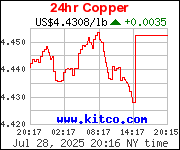
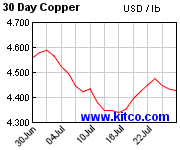
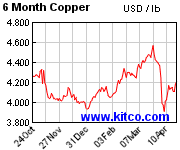
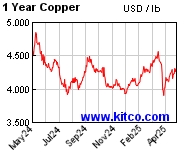
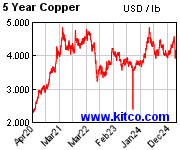
.

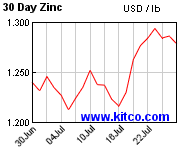
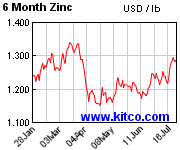
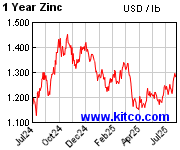
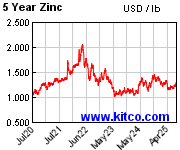
.

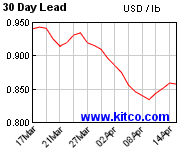
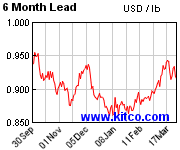
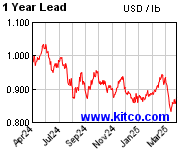
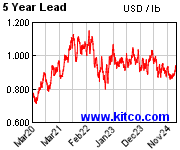
.
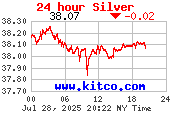



.
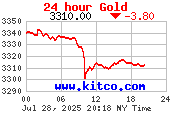



.
.





.





.





.




.




.
- Comodoro
- Mensajes: 980
- Registrado: Jue May 06, 2010 8:24 am
- Ubicación: LIMA
37 mensajes
• Página 2 de 3 • 1, 2, 3
¿Quién está conectado?
Usuarios navegando por este Foro: No hay usuarios registrados visitando el Foro y 26 invitados
